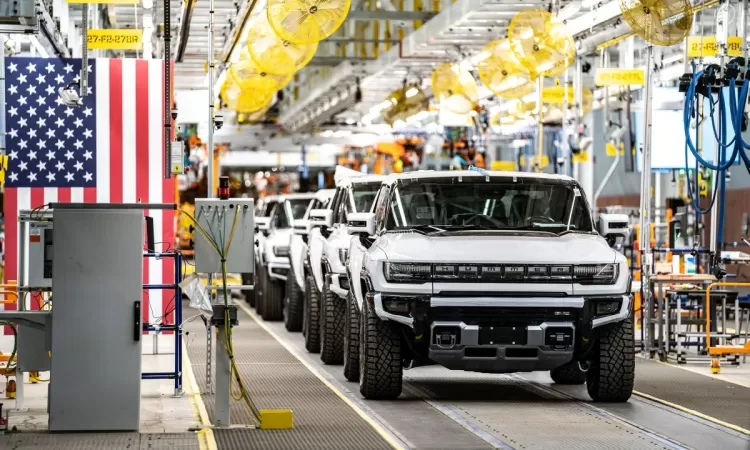Global Auto Industry Faces New Challenges as Trump Administration Rolls Out Steep Tariffs
The U.S. auto industry braces for significant disruption as the Trump Administration imposes steep tariffs, threatening to increase vehicle production costs. As automakers navigate through these economic uncertainties, the ripple effects on car prices, consumer choices, and production strategies could reshape the future of the global auto market.

Context & Background:
The global automotive industry is already under considerable pressure as it navigates through supply chain disruptions, shifting consumer preferences, and rising production costs. Now, with the introduction of new tariffs by the Trump Administration, the situation has become even more complicated. The proposed tariffs, which could reach as high as 25%, are expected to directly impact automakers that rely heavily on cross-border supply chains, particularly those operating between the U.S. and Mexico.
Mexico plays a pivotal role in the North American automotive trade, producing nearly 4 million vehicles annually for the U.S. market. Leading brands like General Motors, Ford, Toyota, and Volkswagen depend on the efficiency and affordability of these supply chains to keep costs low. With tariffs in place, production costs are expected to surge, and manufacturers may pass these additional expenses onto consumers, potentially raising car prices across the board.
Main Developments:
S&P Global Mobility has estimated that a 25% tariff could add a significant $6,220 to the cost of an average vehicle. This surge in production costs threatens to affect major players in the automotive sector, with companies like General Motors (GM) and Stellantis facing billions in additional costs annually. Brands like Volkswagen, Nissan, and Stellantis are particularly vulnerable due to their heavy reliance on Mexico-based production for U.S. sales.
Ford and Honda, while slightly less exposed, are not immune to the looming effects of the tariffs. With production costs on the rise, these automakers may be forced to adjust their pricing strategies to absorb the increased costs. For some companies, this could mean shifting production away from Mexico to avoid tariffs, but such changes would require time, and a rapid shift in production strategies is unlikely in the short term.
Analysis:
The introduction of these tariffs could significantly alter the landscape of the automotive industry. For manufacturers, the increase in production costs will likely have a direct impact on the pricing of new vehicles. Consumers, already facing rising prices in other sectors, may find it harder to afford new cars. As automakers pass on the higher costs, the prices for a standard sedan or SUV could rise by thousands of dollars.
The increased cost of auto parts, as a result of the tariffs, may also drive up repair and maintenance expenses for older vehicles, leading consumers to hold on to their cars longer. This could increase demand for used cars, pushing prices for second-hand vehicles higher as well. Additionally, the repair industry may feel the effects, with costs for auto parts rising, further straining the budgets of consumers who rely on older cars.
This scenario is compounded by the fact that the automotive industry is still recovering from the effects of the COVID-19 pandemic, which disrupted supply chains and halted production in several regions. Now, with tariffs creating a fresh layer of uncertainty, automakers, policymakers, and consumers must navigate these evolving challenges.
Regional Focus:
The North American automotive trade is heavily integrated with Mexico, which serves as a crucial hub for vehicle production. The new tariffs could have significant consequences for the Mexican automotive industry, which is already under pressure due to changes in global trade dynamics and rising production costs.
As the U.S. continues to put pressure on Mexico through tariffs, it could encourage automakers to explore alternatives for their manufacturing strategies. This might include relocating production to other countries with lower tariffs or finding ways to reduce dependency on Mexico for U.S. sales. However, shifting production lines takes time and involves considerable investment, which means that the tariffs could initially strain both the Mexican and U.S. auto sectors.
Conclusion:
The Trump Administration's move to impose steep tariffs on automotive imports will likely have wide-reaching consequences across the auto industry. As manufacturers adjust to rising production costs, consumers could face higher car prices, reduced affordability, and rising expenses in maintenance and repair.
The impact of these tariffs is not just confined to the U.S. and Mexico; it has the potential to disrupt global supply chains and reshape consumer behavior in the auto sector. As automakers navigate these turbulent waters, it is crucial for policymakers to consider the long-term effects on both industry players and consumers.
Ultimately, the auto industry's ability to adapt to these changes will determine how quickly it can recover from this new wave of uncertainty. Whether you're in the market for a new sedan, SUV, or truck, the price of your next vehicle may be significantly affected by the shifting trade policies between the U.S. and its neighbors. As the dust settles, the question remains: How will the automotive landscape change, and will consumers be ready to bear the cost?
What's Your Reaction?














